Yanjun Guo
FormalGeo: The First Step Toward Human-like IMO-level Geometric Automated Reasoning
Oct 30, 2023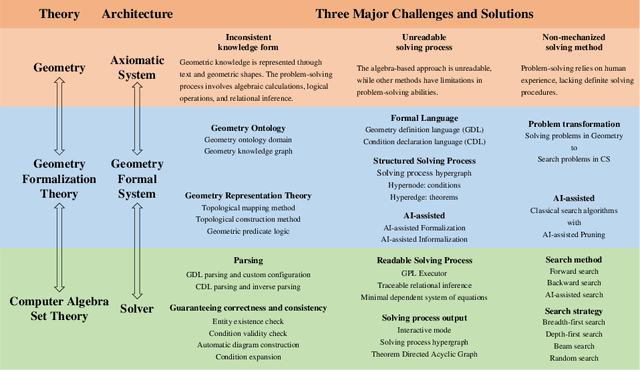
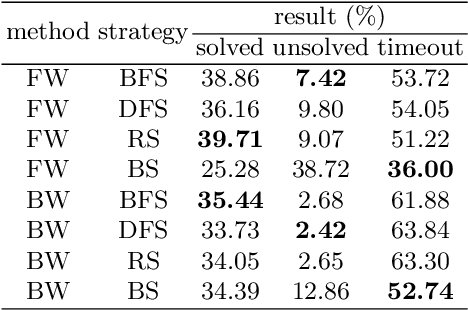
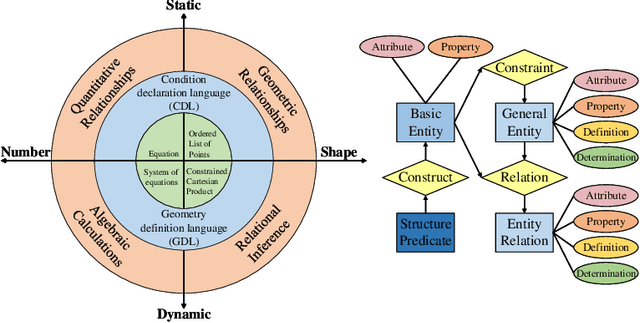
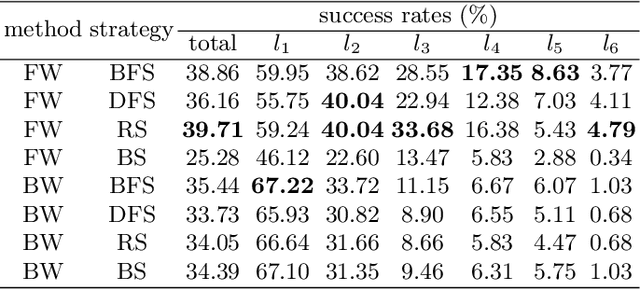
Abstract:This is the first paper in a series of work we have accomplished over the past three years. In this paper, we have constructed a complete and compatible formal plane geometry system. This will serve as a crucial bridge between IMO-level plane geometry challenges and readable AI automated reasoning. With this formal system in place, we have been able to seamlessly integrate modern AI models with our formal system. Within this formal framework, AI is now capable of providing deductive reasoning solutions to IMO-level plane geometry problems, just like handling other natural languages, and these proofs are readable, traceable, and verifiable. We propose the geometry formalization theory (GFT) to guide the development of the geometry formal system. Based on the GFT, we have established the FormalGeo, which consists of 88 geometric predicates and 196 theorems. It can represent, validate, and solve IMO-level geometry problems. we also have crafted the FGPS (formal geometry problem solver) in Python. It serves as both an interactive assistant for verifying problem-solving processes and an automated problem solver, utilizing various methods such as forward search, backward search and AI-assisted search. We've annotated the FormalGeo7k dataset, containing 6,981 (expand to 186,832 through data augmentation) geometry problems with complete formal language annotations. Implementation of the formal system and experiments on the FormalGeo7k validate the correctness and utility of the GFT. The backward depth-first search method only yields a 2.42% problem-solving failure rate, and we can incorporate deep learning techniques to achieve lower one. The source code of FGPS and FormalGeo7k dataset are available at https://github.com/BitSecret/FormalGeo.
SNF: Filter Pruning via Searching the Proper Number of Filters
Dec 14, 2021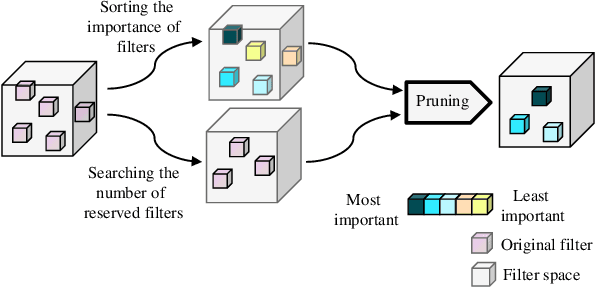
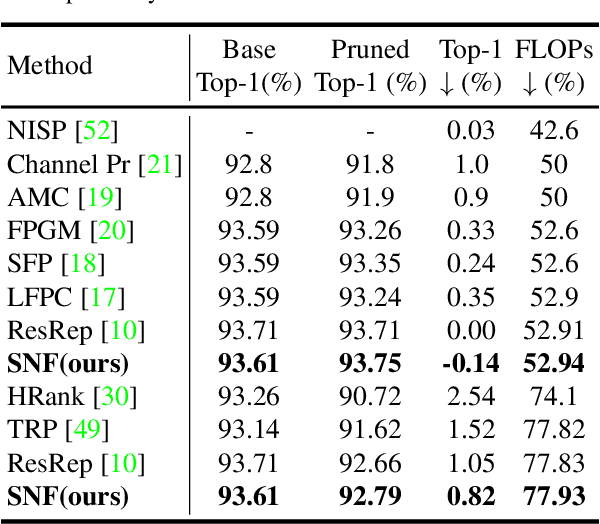
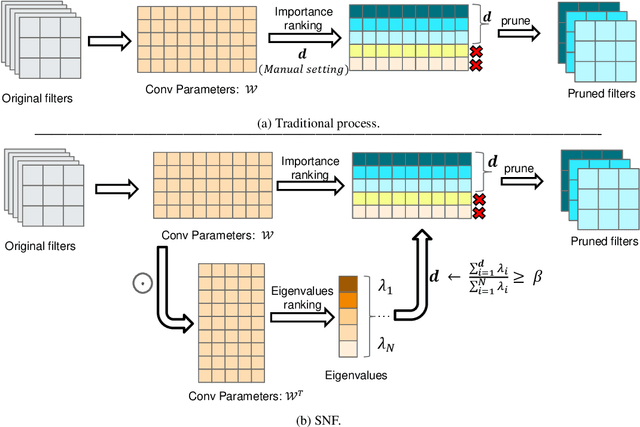
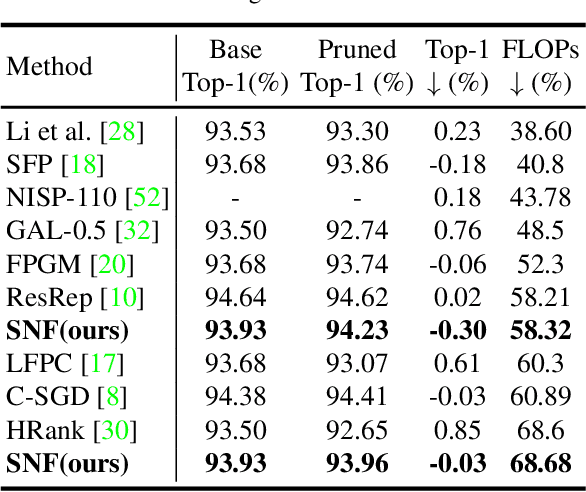
Abstract:Convolutional Neural Network (CNN) has an amount of parameter redundancy, filter pruning aims to remove the redundant filters and provides the possibility for the application of CNN on terminal devices. However, previous works pay more attention to designing evaluation criteria of filter importance and then prune less important filters with a fixed pruning rate or a fixed number to reduce convolutional neural networks' redundancy. It does not consider how many filters to reserve for each layer is the most reasonable choice. From this perspective, we propose a new filter pruning method by searching the proper number of filters (SNF). SNF is dedicated to searching for the most reasonable number of reserved filters for each layer and then pruning filters with specific criteria. It can tailor the most suitable network structure at different FLOPs. Filter pruning with our method leads to the state-of-the-art (SOTA) accuracy on CIFAR-10 and achieves competitive performance on ImageNet ILSVRC-2012.SNF based on the ResNet-56 network achieves an increase of 0.14% in Top-1 accuracy at 52.94% FLOPs reduction on CIFAR-10. Pruning ResNet-110 on CIFAR-10 also improves the Top-1 accuracy of 0.03% when reducing 68.68% FLOPs. For ImageNet, we set the pruning rates as 52.10% FLOPs, and the Top-1 accuracy only has a drop of 0.74%. The codes can be available at https://github.com/pk-l/SNF.
 Add to Chrome
Add to Chrome Add to Firefox
Add to Firefox Add to Edge
Add to Edge